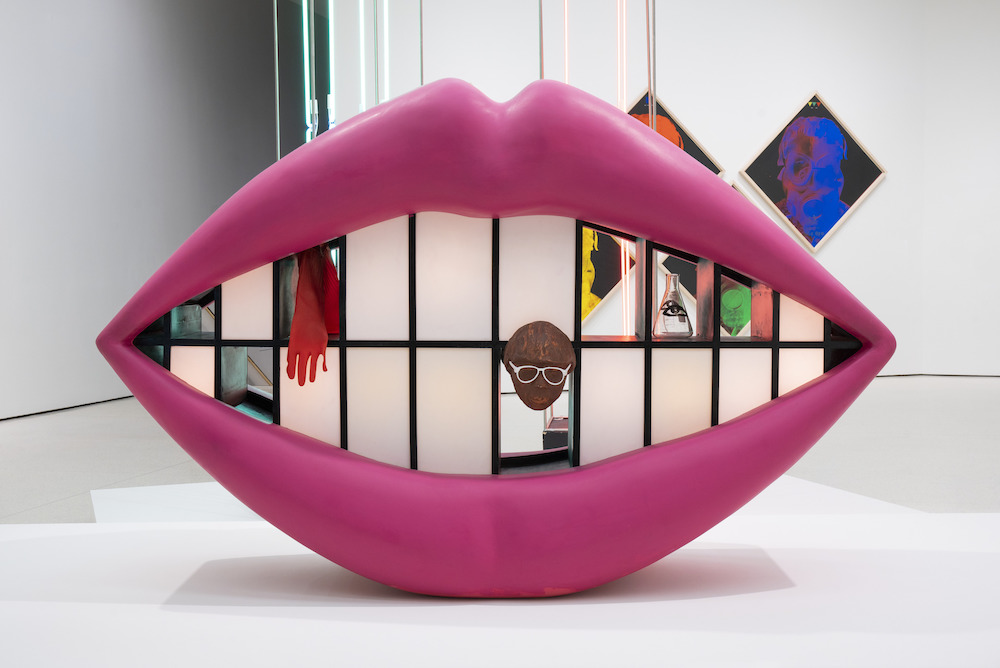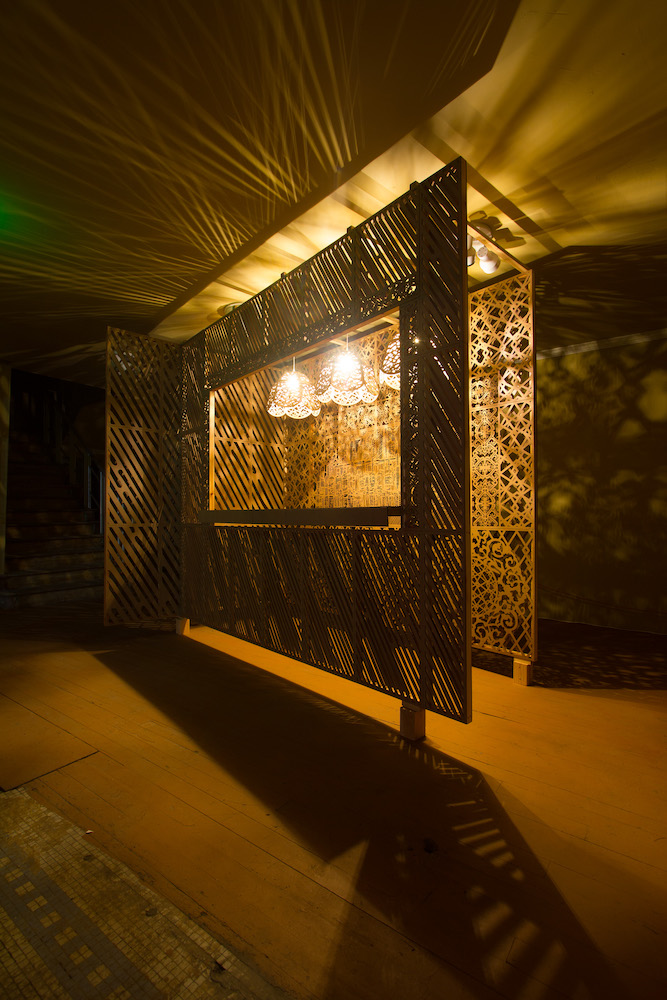It’s the Year of the Dragon in the Chinese lunar calendar, which began February 10, and several museums are featuring Asian/Asian-American artists. Appropriately timed, or maybe just high time to feature them.
For those who did not grow up Chinese, or are not Bruce Lee fans, the dragon is the most powerful creature in the Chinese zodiac, and the only mythological one. (Lee’s Chinese name is “Little Dragon.”) The dragon, or one of the myriad dragons in the mytho-verse, is said to control water in its various forms—rivers and lakes and even the clouds. By this logic, some dragon has been conjuring up the “atmospheric river” that’s deluging California, which gives you a sense of how powerful dragons are.
Back to art. At the USC Pacific Asia Museum in Pasadena, 10 artists are included in “Another Beautiful Country: Moving Images by Chinese-American Artists” (up through April 21). There are videos, photography and installations by Patty Chang, Candice Lin, Ken Lum, Simon Leung and others. At the Hammer Museum, South Korean artists who worked in the post-Korean War period are featured in “Only the Young: Experimental Art in Korea, 1960s–1970s” (up through May 12). These artists took on such (then) avant-garde forms as assemblage, installation, happenings and new technologies.
In early February, I caught Yoshie Sakai’s delightful immersive exhibition, “Grandma Entertainment Franchise,” before it closed at the Vincent Price Art Museum. It was a goofy funhouse dedicated to her own obaa-chan, her grandmother who came to live with her family when she was nine, plus mashups of pop culture and consumerism. The exhibition melded three installations Sakai produced throughout the past three years: Grandma Day Spa, Grandma Nightclub and Grandma Amusement Park. Quite impressive, with a merry-go-round, a faux bar, and in the corner a couple of bathroom stalls plastered with signs and outfitted with headphones.
Most impressive of all was how Sakai taught herself to play her grandmother and act out skits in the videos. She even danced a rendition of the old movie classic Singin’ in the Rain. I could see that the exhibition made visitors nostalgic for their own grandmas, or maybe wish they had a more fun and caring grandma. (And, yes, I belong in that category!) Some nice merch was for sale—notebooks and cards, and even a colorful plush-doll version of obaa-chan.
Congratulations to Artillery columnist Skot Armstrong’s ongoing art project, Science Holiday, which turns 50 this year. He is currently featured in the show, “Copy Machine Manifestos: Artists Who Make Zines,” at the Brooklyn Museum, where some of the earliest Science Holiday publications are on display through March 31.

Kangja, Kiss Me, 1967–2001.
Anat Ebgi has proved to be one of the most successful of our independent galleries—I remember when the gallerist Ebgi started in a tiny space in Chinatown a dozen years ago, at a gallery called The Company. She then opened her own gallery on La Cienega Boulevard. Since then, she’s settled into two LA spaces—one on Wilshire and the other on Fountain.
My recent visit to the Fountain space discovered a very crowded, very lively opening for Chilean-born, New York–based artist Alejandro Cardenas. His surrealist paintings of alien creatures, like praying mantises in various urban settings, are both humorous and creepy. Is he saying something about the post-apocalyptic world? So many artists are looking to the future with gloom. Or maybe he likes insects? This led me to ponder the popular notion that should the H-bomb fall, cockroaches will survive. A cursory internet search reveals, sadly, that cockroaches too are vulnerable to radiation.
Most new galleries shutter in a year or two, but Ebgi has managed to survive and thrive. It hasn’t been easy. “It’s much harder to sell art here than people think,” she said to me that evening. Ebgi manages to do art fairs as well, and shortly after I spoke to her, she flew to New York to open a new gallery in a prime location—5,000 square feet in Tribeca, right on Broadway.
Galleries are still moving into LA, despite inflated rents. Rele Gallery, which specializes in work by African artists (its other branch is in Lagos, Nigeria), has moved to a larger space on Western Avenue, to an area now known as “Melrose Hill,” where you’ll find David Zwirner down the street. Also there’s the new Fernberger Gallery, opened by Emma Fernberger, who has moved from New York and previously a director of Bortolami.
The Pit moved to a 13,000-square-foot space in Atwater Village, which opened February 24 with a group show of 50 artists, plus a “dual retrospective” of Paul McCarthy and Benjamin Weissman. They’ll also sell publications, zines and merch, and the parking lot will occasionally be used for performances, talks and other events. And it’s the gallery’s 10th anniversary—kudos to founders and artists Adam D. Miller and Devon Oder! And last but not least, Tierra Del Sol Gallery has left Chinatown for greener pastures in West Hollywood. Director Paige Wery is a very happy camper with her new, much larger space right across from Plummer Park on Santa Monica Boulevard.


